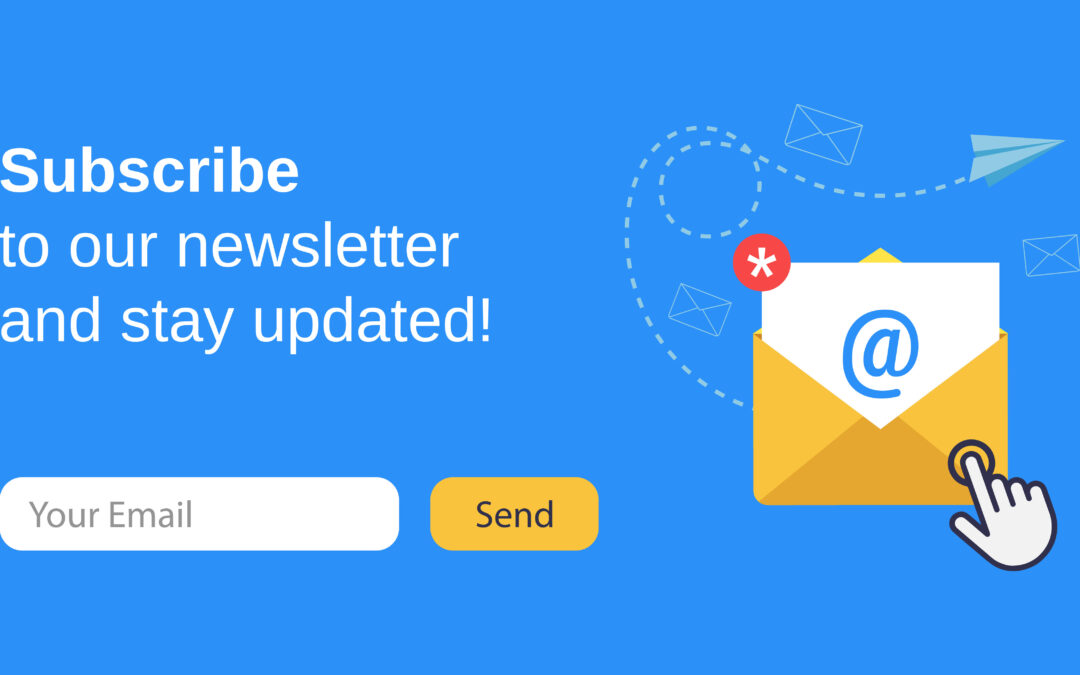It seems that every company in the cleantech sector has a newsletter. Unfortunately, those newsletters exist mainly as an afterthought, whether the company has a marketing team or not.
If you asked most of the cleantech C-Suite why they have a newsletter, they will either answer, “Because we have to,” or “To share updates on our progress to impress funders, stakeholders, and first customers.”
Both answers show a fundamental misunderstanding about the value of sharing content.
When executed properly, a newsletter is a breadcrumb trail into your company’s sales funnel and a way to keep your prospects engaged along the (very long) sales journey, whether selling your technology, building your project, or luring investors.
Here are five keys to capturing an interested audience more effectively and keeping them engaged.
Make It Visible
Most cleantech companies in their early stages (Seed, Series A, Series B) need a larger audience, yet most of them will place a “Subscribe to our Newsletter” invitation at the bottom of the home page or the top corner.
The average visitor to a website spends less than 15 seconds deciding whether to invest more time navigating the hub of your communications, and eyes follow a “Z” pattern when absorbing a screen. Placing your subscribe box out of their direct line of sight is a cardinal sin because it wastes the opportunity to capture interested parties, which is the primary reason for having a website.
It’s Not A “Newsletter”
When you name something, you give it life. Newsletters connote boring, dry monologues that no one wants to read. Calling them an “update” isn’t much better.
Think like your audience would, and give your content a juicier and more enticing face. Who races to open up something called a newsletter?
What’s the first email you open in the morning, and what separates it from the 50 other emails demanding your immediate attention? Sports, entertainment, family, cat videos? Does your audience even open up emails anymore, or do they go straight to the junk folder in favor of scrolling social media?
In today’s hyper-information-overloaded world, no one wants to read another newsletter. Change the online equation by offering an enticement to subscribe, and light up the limbic brain by making it exclusive.
There’s no ideal way to give your subscribers something in return for their sacred email address, but put yourself in their shoes. It’s not like you can give them 15% off their next electron to sign up. Can they get free online video content? Can they get a virtual tour of your facility? Despite its ubiquity, originality on the internet is scarce. Fill the void.
See It As Part Of Your Sales Funnel
Subscribers are typically beta customers, investors, regulators, and community stakeholders, and your content should be seen as a way to get their buy-in of your clean technology.
There’s a reason Fortune 500 companies continue to spend billions of dollars on marketing and advertising. They want to stay at the top of their target audience’s minds and control their company’s narrative.
The average human brain takes six or seven repetitions before it stores your message in long-term memory lobes, and each message is ephemeral. It lasts only until the next stimulus replaces it. That’s why the years-long sales funnels in cleantech require frequently paced exclusive content to nurture your core community and give them a stake in your success.
Email content goes hand-in-glove with your business development, community outreach, and sales teams. It builds trust and credibility and is another communication touchpoint with your audience over time in a distracted world.
Publish Regularly
Too often, I see growth-stage cleantech companies treat content as a necessary evil, and that’s half true; it is necessary.
There’s no “right” formula for how often your company or project should share content with your email list. Daily is obnoxious, and quarterly is like spitting in the ocean.
It’s easier to publish if you don’t view content through a 20th-century prism. A “newsletter” doesn’t have to be written content (see above). It doesn’t even have to be news.
Today, a panoply of communication options are available: video, audio, live-streaming, etc. If your communication style is not video, audio, or live-streaming, writing 800-1,000 words on a regular schedule can be exhausting. I can guarantee that your audience comprises various learning types, so why limit yourself?
Turn on your video camera and start speaking. Make a Loom video. If you’re ambitious, start a podcast. The only criteria are that it’s interesting and engaging.
Share It On Social Media
One of my personal pet peeves about the cleantech community’s arm’s length relationship with social media is the misconception that no news is good news.
Limiting your posting to conferences and awards isn’t just boring for your audiences; it’s a disincentive to social media’s all-powerful algorithms.
Quite simply, the more you post, the wider the algorithm distributes it. Social media business models (even LinkedIn) are based on keeping people engaged on their platforms so viewers see more ads. When you produce interesting content that viewers stop to read, the algorithm assumes more people will want to see it and behaves accordingly.
People watch videos far more than they read, so work with the platform, not against it. Produce content that inspires and entertains. Often, it’s a better way of connecting with your audience.
As a society, we like our information in bits, not chunks. Share pieces of your newsletter on social media more regularly rather than forcing people to read the entire thing. This will help keep you top of mind and encourage more people to become subscribers, where you can better educate and convert them.
Interested in creating a content strategy for your cleantech company? Set up a free 30-minute consultation.

